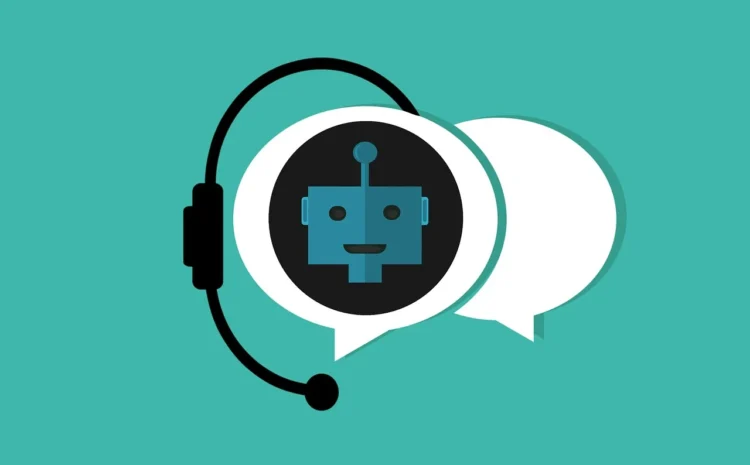The benefits and limitations of using chatbots for customer service
Chatbots have become increasingly popular in recent years, especially in the realm of customer service. These intelligent computer programs use natural language processing (NLP) to simulate conversations with human users, allowing businesses to automate certain aspects of their customer support. While chatbots offer a number of benefits, they also have limitations that should be considered before implementing them. In this blog post, we’ll explore the advantages and disadvantages of using chatbots for customer service.
Benefits of Chatbots for Customer Service:
1. 24/7 Availability
One of the main benefits of using chatbots for customer service is their ability to operate 24/7. Unlike human customer service representatives who are limited by work hours and availability, chatbots can handle customer inquiries at any time of the day or night. This means that customers can receive support whenever they need it, even outside of traditional business hours.
2. Cost-Effective
Hiring and training customer service representatives can be expensive, especially for small businesses. Chatbots offer a cost-effective alternative by automating certain aspects of customer support. They can handle basic inquiries and provide self-service options, freeing up human representatives to focus on more complex issues.
3. Improved Response Times
Chatbots can respond to customer inquiries almost instantly, which means that customers don’t have to wait long for a response. This can help improve customer satisfaction and reduce frustration.
4. Consistency
Chatbots provide consistent responses to customer inquiries, which helps ensure that all customers receive the same level of service. This can help build trust and loyalty with customers.
5. Data Collection
Chatbots can collect data on customer interactions, which can be used to improve the customer experience. For example, businesses can use this data to identify common issues and improve their products or services.
6. Faster Response Times
Chatbots can respond to customer inquiries much faster than human representatives. They are designed to process large volumes of requests simultaneously and can provide instant answers to common questions. This can greatly improve customer satisfaction by reducing wait times and ensuring that customers receive prompt assistance.
7. Consistent Quality
Chatbots can provide consistent quality in customer service. They are programmed to follow a set of rules and guidelines, ensuring that all customers receive the same level of service. This can help to improve customer satisfaction and loyalty, as customers know what to expect when interacting with the company.
8. Multitasking
Chatbots are capable of handling multiple conversations simultaneously, making them ideal for busy customer support environments. They can handle an unlimited number of customer inquiries at once, reducing the need for additional staff during peak periods.
Limitations of Chatbots for Customer Service:
1. Lack of Personalization
Chatbots are not able to provide the same level of personalization as human customer service representatives. They are limited to pre-programmed responses and cannot provide the same level of empathy or understanding as a human representative.
2. Limited Understanding of Context
While chatbots are designed to understand natural language, they can still struggle with complex requests or nuanced contexts. They may misinterpret customer inquiries or provide irrelevant responses, leading to frustration and confusion.
3. Lack of Empathy
Chatbots are not capable of expressing empathy or building relationships with customers in the same way as human representatives. This can lead to a cold, impersonal customer experience, which may negatively impact customer satisfaction.
4. Inability to Handle Complex Issues
Chatbots are best suited for handling simple and straightforward customer inquiries. They may struggle with complex issues that require human intervention, leading to frustration and dissatisfaction among customers.
5. Limited Customization
While chatbots can be programmed to handle specific tasks and inquiries, they lack the flexibility and adaptability of human representatives. They may struggle to handle unique or unexpected situations, which can result in poor customer experiences.
6. Maintenance and Updates
Chatbots require ongoing maintenance and updates to ensure they continue to provide accurate and relevant responses to customer inquiries. This can be time-consuming and expensive, especially for businesses with limited resources.
7. Limited Capabilities
Chatbots are limited in their capabilities and may not be able to handle complex inquiries or issues. In these cases, customers may become frustrated and dissatisfied with the service they receive.
8. Language Barriers
Chatbots may not be able to understand or respond to inquiries in languages other than those they are programmed for. This can be a problem for businesses that operate in multilingual environments.
9. Technical Issues
Chatbots rely on technology, which means that they may experience technical issues or malfunctions that can disrupt the customer service experience.
Conclusion
Chatbots offer a number of benefits for customer service, including 24/7 availability, faster response times, and cost-effectiveness. However, they also have limitations, including a limited understanding of context, a lack of empathy, and an inability to handle complex issues. Businesses should carefully consider these advantages and disadvantages before implementing chatbots for customer service. While chatbots can be a valuable tool for automating certain aspects of support, they should not be relied upon as a complete replacement for human representatives. A combination of chatbots and human support can provide a balanced and effective customer service experience.
Contact us for Tech & Marketing Services at www.emarkeet.in OR [email protected]




Write a Comment